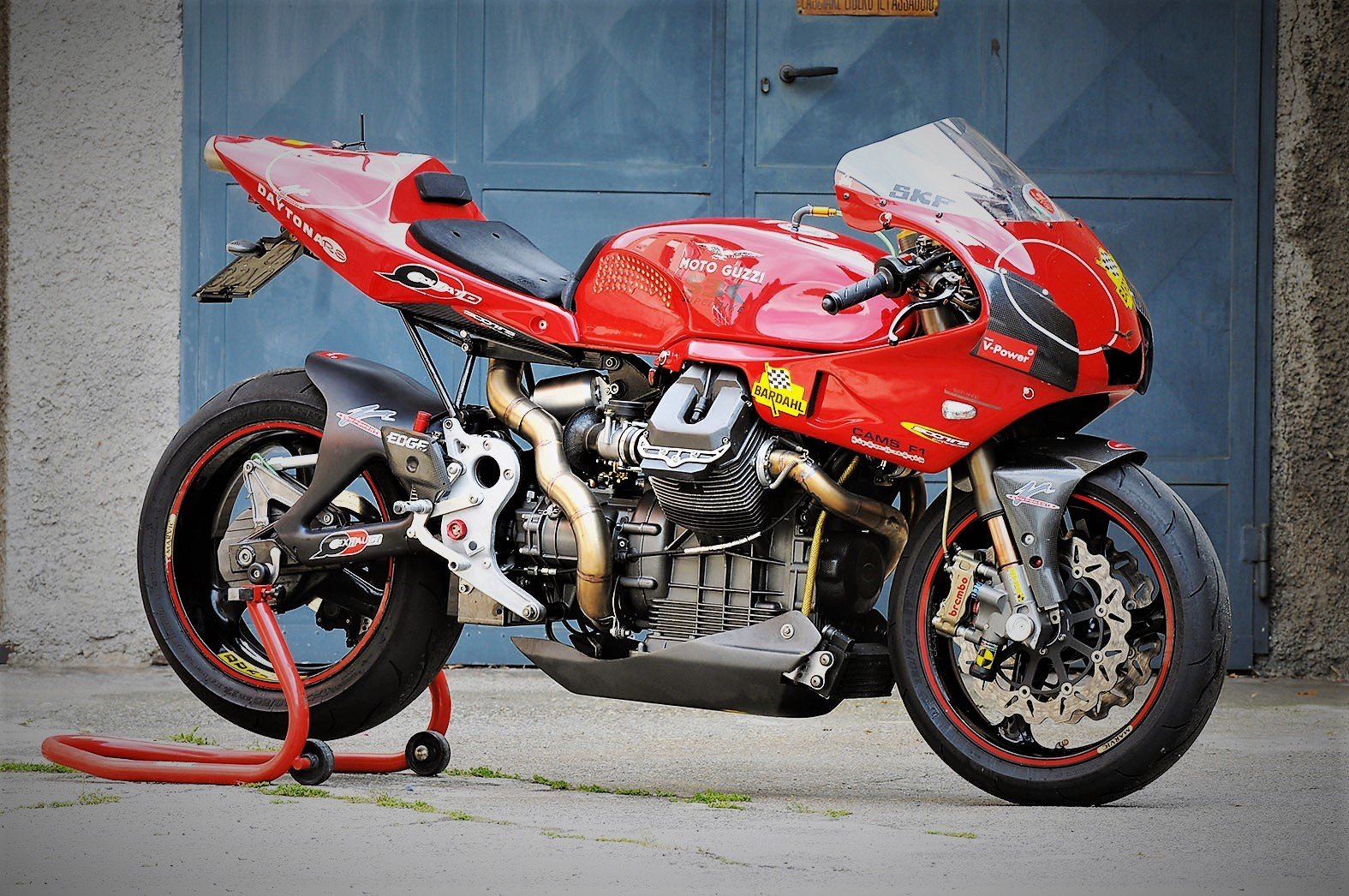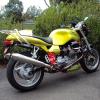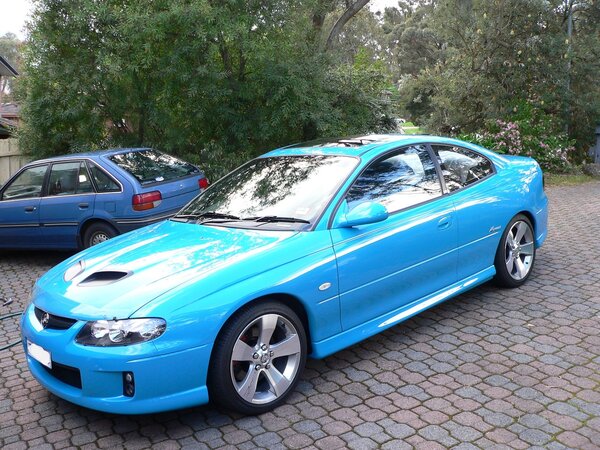-
Posts
5,449 -
Joined
-
Last visited
-
Days Won
276
Content Type
Profiles
Forums
Events
Gallery
Community Map
Everything posted by Lucky Phil
-
These are not available new anymore and haven't been for at least 32 months. I ordered and paid for one almost 3 years ago and was advised by HMB that the factory don't have stock anymore. You have mentioned previously "different alloy" for later versions but never produced any evidence of it and now it's "re manufactured" by the original producer and "maybe" changes to the casting? I'd like to believe it's true but I'll need to see some evidence. If we are going to add to the body of knowledge we need establish facts based on something solid, either comparative measurements or documented updates etc. Ciao
-
ThreeBond 1104 neo and 1215, Hylomar, Permatex thread sealant, Ford TA-30 and Permatex Ultrablack. But if you want the best I've ever used this is it, dries clear as well so it's invisible. Used it many many times for vertically split Ducati crankcase halves and engine covers. Omnivisc 1002 is also excellent. The 1050 is it's successor. https://www.scooter-center.com/en/liquid-gasket-loctite-omnivisc-1050-90g-3600017 You can obviously buy it from other sources as well. Number 1 thing after an immaculately clean surface ( I use MEK to clean down the joint before applying sealant) is to let it cure for whatever the manufacturer recommends, usually 24 hours before subjecting it to oil or running. If you want sealants that can be used immediately they are available but the amount of really labour intensive jobs I've seen botched from not allowing curing is staggering. Ciao
-
This is true but as a retired aircraft engineer of 42 years you need to bare a few things in mind. The piston engine technology you're referring to is around 75 years old or more and materials evolve. Also old aircraft practices/technology tends to not evolve much as the process of re certification is so onerous, so outdated practices hang around not because they are necessarily superior in some way but because they are a "known" and "approved" practice. I've been using and still use Hylomar or "Rolls Royce" compound as we also called it for as long as I can remember but there are modern sealants better suited and superior for motorcycle engines these days. Ciao
-
Yes Chuck on the LHS mount you're right. My repair was to the RHS mount so thats where my head space was. I removed this sharp corner on mine with a small round file wrapped in and wet and dry to finish it off although mine wasn't cracked here. It did undercut the mount a little but the trade off was worth it in my view. I also dressed the radii on all the sharp corners with the die grinder and a tiny ball shaped cutter as well which you can see in the images. I also did the same on the RHS mount although this isn't where mine was cracked. I'd have prefered to do it with a small Bull nosed cutter in the mill but I didn't have the facility. My repair looked a lot nicer before I peened and dressed it back. It's rock solid now though.
-
This theory's been mentioned before and I'm not convinced this is the issue. I believe it's a micro crack initiated when the casting cools and is due to the sharp edge at this point and the large cross sectional change which causes a differential cooling rate. The crack then propagates over the miles and heating/cooling cycles. Yours is way worse than mine and well beyond any JBweld temporary solution. You may as well get it properly repaired because the chances of buying a second hand one that already has a latent crack is high. Part of owning an old classic like a V11. You need to do some "engineering" eventually and more often than not on a few different areas. To effectively repair this you need to chase out the crack with a die grinder and get it welded by someone that knows what they are doing. The idea is to heat the case to around 150 C before the welding starts and in your case half way through the weld repair stop and peen the weld to stress relieve the area and then finish it off and peen the finishing weld. It's not a complex scenario to someone that knows what they are doing. My gearbox mount showed no signs of any cracking, I just checked it because I'm a physco and knew of the issue. Seems it was a good decision. My original gearbox needs the same done to it as well. Ciao
-
The gearbox repair information you need is here including the repair and gearbox re assembly. To me it was just an engineering thing but to others probably more scary. You need a good welder whos dedicated to getting it done without distorting the case sealing face which wasn't a problem with mine. I'd suggest an licenced aircraft welder. Mine now stronger than a std one and I also run the additional frame support. Ciao
-
What sort of battery? If it's an Odyssey it'll still probably be ok after conditioning. They start better in my experience if you set the high idle lever on and don't touch the throttle until it's running. Ciao
-
I'm trying to understand the relationship to the oil pump and ignition switch. Do you mean the Low oil pressure light or the fuel pump to prime? If you need to jiggle the key in the ignition switch to make things work then you should consider it "broken" and look into fixing it. You can disassemble it. hard to start? what have you done to it so far in the restoration. How long has it sat dormant? Ciao
-
Pull the tank and clean and inspect, same for the injectors and fuel filter. The injectors will probably need professional cleaning and the filter changing. Pull the plugs and rotate the engine by hand then on the starter with the plugs out make sure the LOP light goes out then drop the oil and filter and replace both. Replace all the brake and clutch fluids and bleed. Check the airbox and filter for dirt and critters then the usual stuff. Unless it leaks after you get it running then any engine and gearbox seals seals should be fine. Ciao
-
From the album: lucky phils V11
-
No the ST2 was red, the TT2 was red, the 1198 is red, the bevel 750 Sport was yellow, the Hailwood Mille was red white and green, the 750 GT was Bronze, the 750 Sport belt engined bike was Matt Black then red, the 1098 was red. That's just the Ducati's. I've owned my fair share of red bikes it's fair to say I actually wanted a Black 1198 but one wasn't available at the time. When I bought the 1000ss I also wanted a red one as well and have a full set of bodywork and a good second hand tank ready to paint red which was my intention. I then about 5 or 6 years later went to a motorcycle gathering and on display was a couple of 1000ss bikes in red and was actually happy mine was yellow. Not that yellow would have been my first choice but it seems that red is a very "safe" choice for a bike colour but it dates a bit quickly I think. Each car or bike has it's 'best colour" whatever that may be. I wouldn't choose a car in the yellow the 1000ss is as to me it's not really a colour for a car with so much painted area. My old Monaro was blue and that colour looked great on it but it didn't look good at all on the sedan or ute version of that model. my Focus RS in Blue Ciao
-
The washer is there so the shoulder of the bolt tightens down on a flat steel face and not the alloy pork chop and also as a surface for the brake pivot bush and housing to bear against. Cant remember off hand but 3mm sounds about right. Ciao
-
Should re name this "show us your pork chops" lol. Hers mine after I painted them in 2k. Ciao
-
Here's a tip before you write off any sealed bearing because it feels stiff esp after greasing. use a small screw driver watchmakers or tooth pick or similar and lift the grease fitting ball off it's seat a fraction and release any pressure in the bearing. Sometimes they will actually let out a pssst and shoot a little squirt of grease. The bearing will now turn freely. Internal pressure on the seals is the issue. Used to happen greasing aircraft regularly. Ciao
-
Yes so the V11 figures should be pretty close. Ciao
-
With your figures I get 109.982 trail for the Griso and 95.758 for the V11. Ciao
-
My calcs must be pretty close as I get the Griso at 110mm trail using assumptions about front tyre dimensions and fork length. Remember a Griso uses traditional style wide handlebars compared to a v11 clipon style as well which gives more leverage. Ciao
-
I assume so from my calculations but I'm open to being corrected by attributable material. In broad terms it's not a major issue if my actual figures aren't exactly correct it's more about the differential between the various permutations based on the same baseline data I used. Ciao
-
I personally wouldn't assume that. Ciao
-
You need to look at these charts with a careful eye. I've spent hours and hours researching these in the past and they very often contradict themselves or aren't comprehensive or detailed enough. This chart for instance look like it's geared more to the mining industry than the automotive and therefor I personally wouldn't rely on it entirely for motorcycle work. Not saying it's wrong but if you look at enough of them you start to get an idea of where their focus is and it makes a difference.I don't see Gasoline on this one and it's important not to extrapolate general stuff into specifics such as Hydrocarbon or tolulene into gasoline. I've seen these charts indicate that Nitrile is fine in Gasoline which it is for a trapped seal but not as a dynamic seal and some Nitrile is better in fuel than other compounds. Even constrained nitrile seals when removed have swelled in gasoline and cant be reused so you need to not rely on any one particular of these generic charts as they can and do vary quite a bit. Ciao
-
Good question. I've dealt with orings of various types and materials all my life in aviation and motorcycles and cars. We had at one point issues with leading edge actuators leaking hydraulic fluid on long flights but were fine on shorter flights of sub3 hours. Of course when they did leak in cruise on the longer flights by the time the aircraft got on the ground the leak had disappeared. So long cruise and we had passengers taking images through the cabin windows of hydraulic oil coming off the trailing off the wing and when the aircraft arrived at the next port zero leaks. Quite frustrating to deal with from a certification perspective. The reason? Well the manufacturer had decided to change the actuator oring material to "something better" problem was the "something better" wasn't actually that great at -45 deg C 42,000' foot cruise for more than a few hours. Cold soak set in and so did the leaks. Long descant to warmer air for landing and the problem disappeared. With regards to motorcycles the applications are pretty straight forward and as is the case in situations like this when all the technical intricacies and materials start to get delved into by people I simply go back to what has actually worked in previous practice. Theory and intricate detail on form function and material has it's place of course but apart from the transition to FKM/Viton for engines from Nitrile everything else seems to work acceptably well. The one interesting exception that needs to be considered on modern engines though that catches many mechanics esp home mechanics out is the use now of Flurosilicon seals for cranks and some other areas. Lubricating these when installing actually causes them to leak. They rely on being installed dry and the first rotations of the shaft deposits material from the seal onto the shaft and creates the sealing effect. If you don't read the manual and aren't aware you can have a major job on your hands to do the seal replacement all over again. Ciao
-
sorry. As you can see it's slotted a fair way to relieve the stress. Best image I have.






